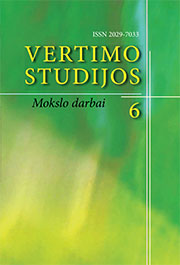PARATEXTS IN TRANSLATIONS OF CANONICAL TEXTS (THE CASE OF THE BIBLE IN LATVIAN)
PARATEXTS IN TRANSLATIONS OF CANONICAL TEXTS (THE CASE OF THE BIBLE IN LATVIAN)
Author(s): Andrejs VeisbergsSubject(s): Theoretical Linguistics, Biblical studies, Translation Studies
Published by: Vilniaus Universiteto Leidykla
Keywords: Paratexts; Translation of Bible; Latvian; canonical text;
Summary/Abstract: The paper discusses paratexts, their use and prevalence in translations of the Bible in Latvian, with a particular focus on the last translation that was published in 2012. Paratexts are used to improve the perception of the main text and may include introductions, prefaces, postfaces, footnotes, side notes (marginalia), endnotes, glossaries, indexes and appendixes. Though the translation of the Bible, being a canonical text, is subject to various limitations, there is an increasing tendency to use more footnotes to explain various phenomena: information about the original texts, different variants of the Bible manuscripts, the existence or nonexistence of some verses; cultural words and facts – explanations about units of measurement, old objects, concepts, geographical and historical information; linguistic information: explanations of polysemy, decoding of words, etymologies of place names, semantics, wordplay; and alternative translations offered by the translator. The author suggests a glossary that could inform the reader of the Biblical characters, place names and the new transcription of many proper names. Footnotes could then dwell on linguistic issues.
Journal: Vertimo studijos
- Issue Year: 6/2013
- Issue No: 6
- Page Range: 75-86
- Page Count: 12
- Language: English

